When you first lay your hands on a drum set, it is time to learn some basic drumming techniques. Of course, as time goes on, you’ll want to learn more exciting methods or genre-specific drumming techniques. To the uneducated, it can seem like there isn’t much more to drumming other than hitting things hard. Actually, there is far more to it than that, and the way you hold your drumsticks, and the way they hit, roll and stroke along the drums all make a difference, and you’ve also got a load of different bass drum and double kick drumming techniques to suit certain genres and styles. Two drummers can actually have very different techniques, and along with being able to keep rhythm, they can create a certain feel to a song by using nuanced techniques and methods in different, exciting ways.
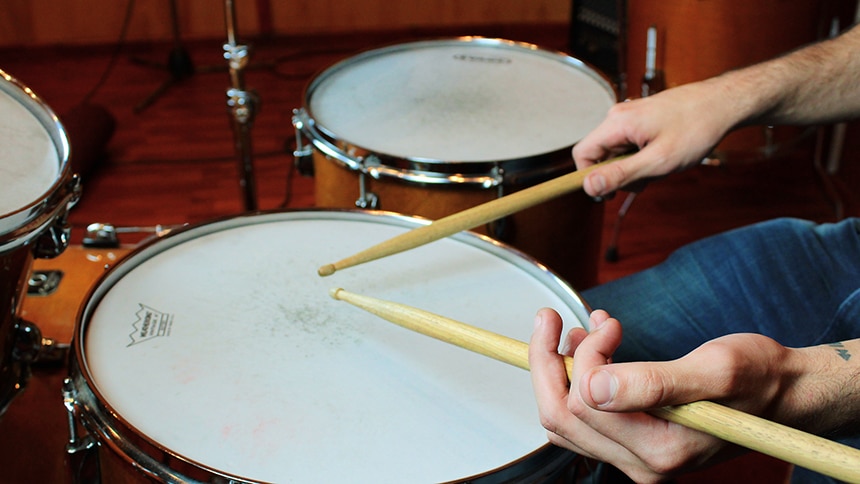
One of the very first things you will learn, and a fundamental aspect of drumming, is getting the right grip. This means getting a reliable set of drum sticks and choosing how you are going to hold them. Some grips are better for certain styles of music and provide a slightly different sound quality. Learning how to grip is one of the essential drumming techniques for beginners, but as time goes on you might want to learn how to use different grips to get different results.
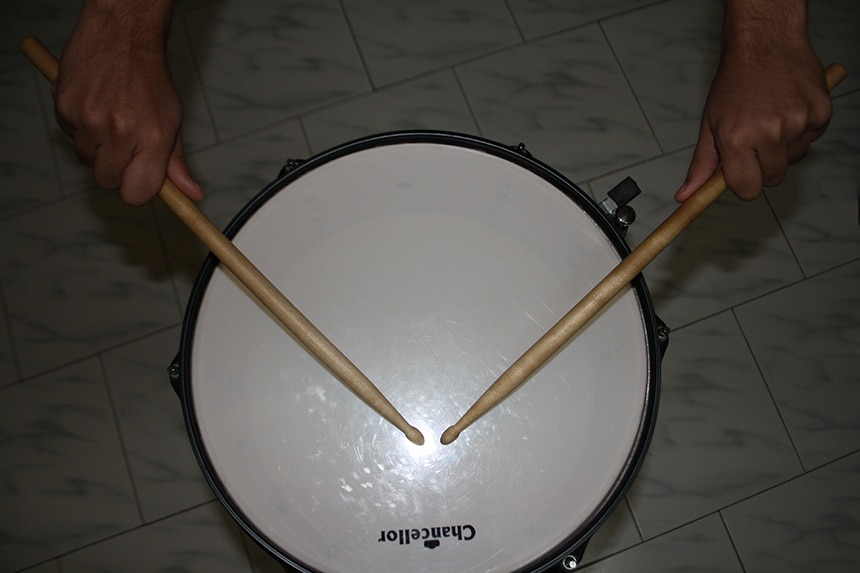
With the German grip, the sticks are held in the hand with the palm facing down the whole time. This means that you use your arm and your wrist completely in order to create the movement that actually hits the drum. Assuming you’ve got a good snare drum which is properly tuned, this will create a loud and clear sound that rings out a while after hitting.
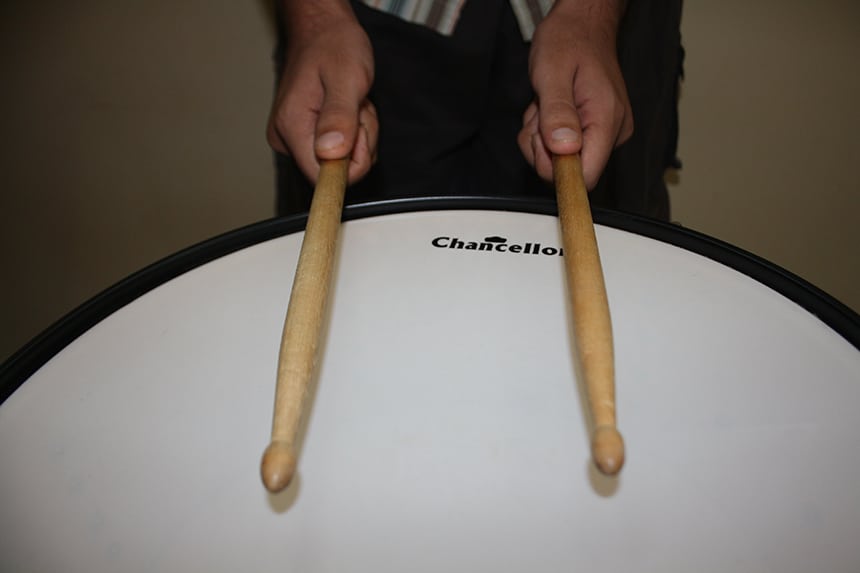
The French grip is similar, but the hands rotate in the motion and the thumb is generally facing up rather than down. The rotation in the arm can be compared to turning a door handle, which is a good way to understand it if you are new to drumming. Some speed drumming techniques make use of this rotation to create a faster rhythm.
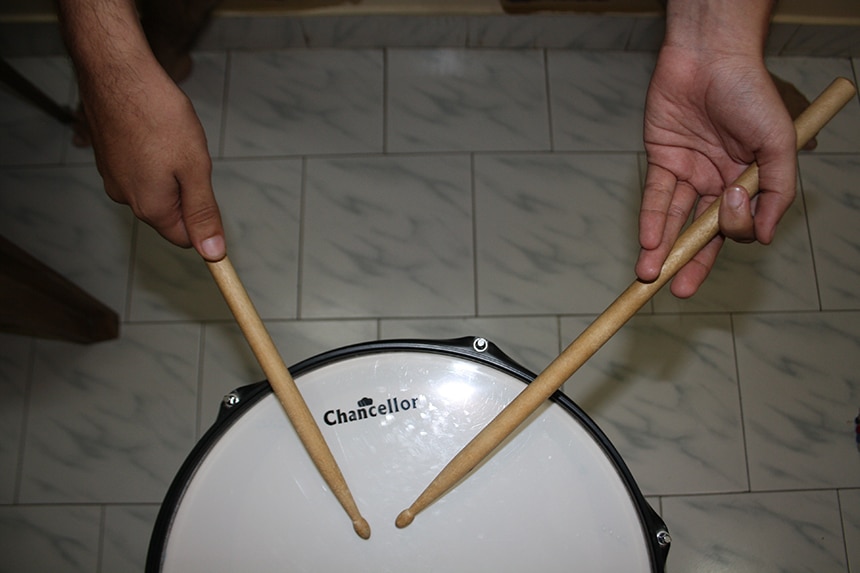
This is often the chosen grip for jazz drumming techniques. The traditional grip has the palm upwards and the stick sits between thumb and forefingers. You’ll see a lot of jazz drummers doing this, and if you do it right you can get a lot of control. If you want to play with brushes, this is a good technique to use. Though it is called “traditional” that doesn’t mean it’s the most common grip.
Accuracy is nothing short of essential. However, it’s really important that you understand exactly what accuracy means for a drummer. Initially, you will want to practice basic drumming techniques that involve hitting the center of the drum consistently. As you evolve, some cool drumming techniques involve hitting the drums at different points to create a different quality of sound. The Extreme Interdependence drumming tuition book and CD can help you to build these techniques up, and work on accurately playing some basic rhythms.
Wherever you want to hit your drum to produce a great sound, it should be accurate. Once you know how to hit the center of the drum regularly, you can experiment with what happens when you hit off-center or towards the rims.
The basic strokes and rudiments are the simple techniques that you use to make up a drum beat. These are the rolls and strokes, and smaller parts of a rhythm, that can be used together to make a beat. Although you’ll want to move onto some of the cool drumming techniques you see your favorite drummers use, you should get an understanding of the strokes and rudiments first. You can even use finger drumming techniques or a simple practice pad to get used to these.
Basic strokes include:
Single stroke, double stroke, flam and paradiddle drum rudiments are the first to learn. There are 40 widely-recognized drum rudiments that you can work your way through. Practicing rudiments is something that all drummers should do religiously, and especially if you want to become an established player with some complex rhythms behind you. You can use finger drumming techniques or even grab certain methods such as practice pads to get to grips with this.
Dynamics are to do with the volume of the drumming, and the velocity at which you are hitting the drums at any given time. Learning how to control the dynamics makes you a much more nuanced player. A good drummer will consistently play at the same sort of volume, but can deliberately make alterations. For example, you might play one section that is a bit louder, when you are in a chorus, for instance. What you don’t want is unreliable dynamics where you’re really quiet for 10 seconds then loud for 10 when you want to keep a steady rhythm.
One of the very first drum techniques, taught for all styles from jazz to latin drumming techniques.
Push-pull technique is usually put to use on a snare drum, or you can use a drum practice pad to get used to doing this with your wrist and hand. It’s one of the earliest speed drumming techniques, as it lets you make two quick strikes. The first is made using the wrist as this drops down onto the drum, but as the rebound causes it to come up, you can keep your wrist in position, you then use your fingers to strike it again. You “push” with the wrist and then “pull” with the fingers to create a clasping motion and cause the second strike. This is really useful for all sorts of drumming and is a good way to warm up.
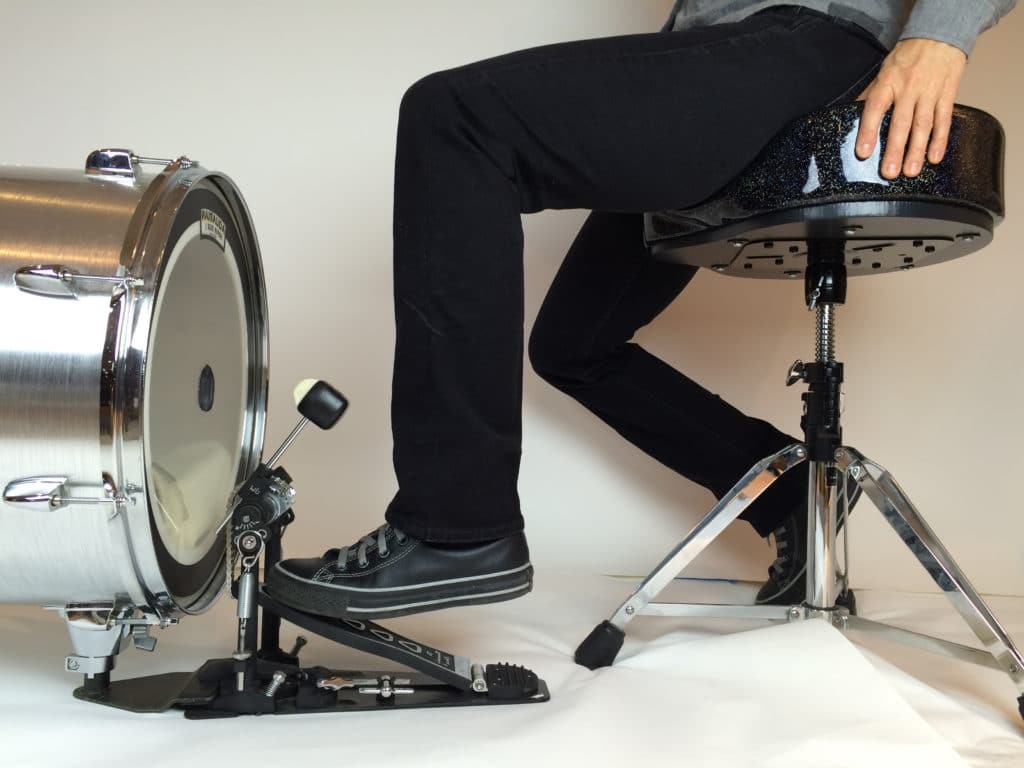
Foot technique is often ignored, but it shouldn’t be! Learning how to hit your bass drum can make all the difference, especially in some genres. Metal drumming techniques often utilize double kick drumming techniques to keep a fast rhythm but plenty of power.
The main distinction when you first learn foot drumming technique is heel up or heel down drumming. What does this mean?
Heel down leans the foot is flat to the floor where your heel sits. Only the front of your foot raises to play the pedal. This can provide a gentler way for you to hit the kick drum. Your shins might hurt after a while using this technique, but it provides a natural feel and a resonant sound. Drummers for jazz and some gentle, acoustic music might find that this nuanced tone is ideal.
Whether you drum open-handed or not is another matter for personal preference. A lot of metal drummers use this technique as it lets them create more hand power when they are hitting their snare drums.
Open-hand drumming techniques are when your hands are not crossed to play the snare and hi-hat. By keeping the hands in an “open” position you may allow for easier, flexible movement. A lot of drummers use this configuration to start out.
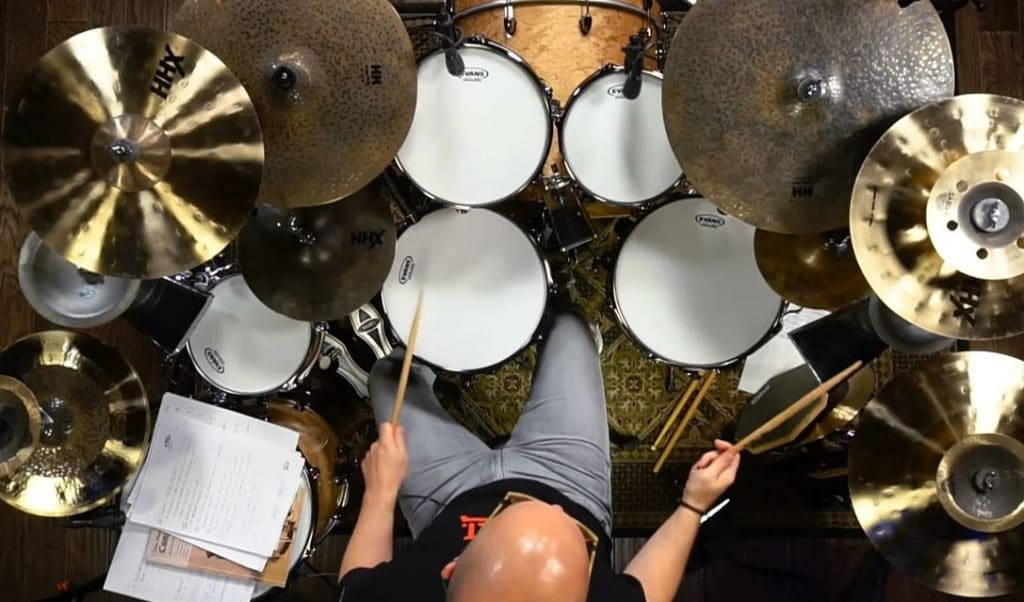
This position can be used if you put your ride close to your hi hat, it lets you quickly transition between the two.
Independence is vital for drumming. So, what does this mean? This book gives a fantastic overview of independence techniques. By this, we effectively mean ways in which you can get all of your limbs doing something slightly different at the same time. This is incredibly difficult.
Have you ever tried to rub your belly and tap your head at the same time? Now imagine you’re trying to do two other things with your feet at the same time. This is what drumming is. At times, all four of your limbs will be doing something independently. This is something that comes with practice, but only if you are using specific techniques to get your brain and body used to this.
For a drummer, you may have one hand playing a ride, one playing a snare, and one foot controlling hi-hats while another does a rhythm on the kick drum. You need to be coordinated to do this, and on top of this, you may need to be able to read music simultaneously. Some people say that drummers are less than smart, but we can tell you this is not true!
Luckily, most of the drummers who need this sort of dextrous independence are looking into latin drumming techniques or jazz drumming in unusual timings. It can take a long time to get yourself comfortable and confident with using all four limbs.
Knowing how to read drum sheet music is a bit like knowing how to read music for a guitarist or a pianist. You don’t necessarily have to do this. There are plenty of drummers who don’t know how to read drum sheet music.
The musical staff is a bit different for drummers, when compared to other musicians. Instead of being used to signify the notes being played, they are used to signify which parts of the drum you are hitting. This is sometimes called a “drum key”.
The drum hits have proper notes but cymbals just have tiny “X” notes that help you to differentiate. Hi-hat and ride are both on the same line of the drum staff.
It looks pretty complex when you haven’t learned how to read music before, but drummers have it slightly easier than some other musicians. The staff is designed as an approximate display of where the drums actually sit within the kit. For instance, you play bass drum and hi-hats with your feet, so they are the lowest on the staff. Cymbals are highest. Snares and toms sit in the middle. This can help you to recognize which notes to play.
There is a lot of other information that can be gained from reading music. Drum sheet music shows things like the time signature, tempo, and how long each note is to be played for. It can be hard to read music or “sight read” but it is worth it if you are looking to play lots of different styles. Some rock and pop drummers could definitely get away with never learning how to read sheet music. You can follow tutorials and learn the drum patterns without being able to work out tabs and notation, but it definitely helps if you understand this.
You can spend your whole life playing the drums and still have plenty to learn. If you watch some of the drummers you admire, you will probably pick up something new that you want to add to your repertoire. You can always explore new drumming techniques, time signatures, and ways to create your own unique style. When you’re a beginner, you should get your head around the simpler methods and drum rudiments in order to create a foundational knowledge. You can then start playing with other musicians and gain more experience, learning the techniques relevant to your own style.